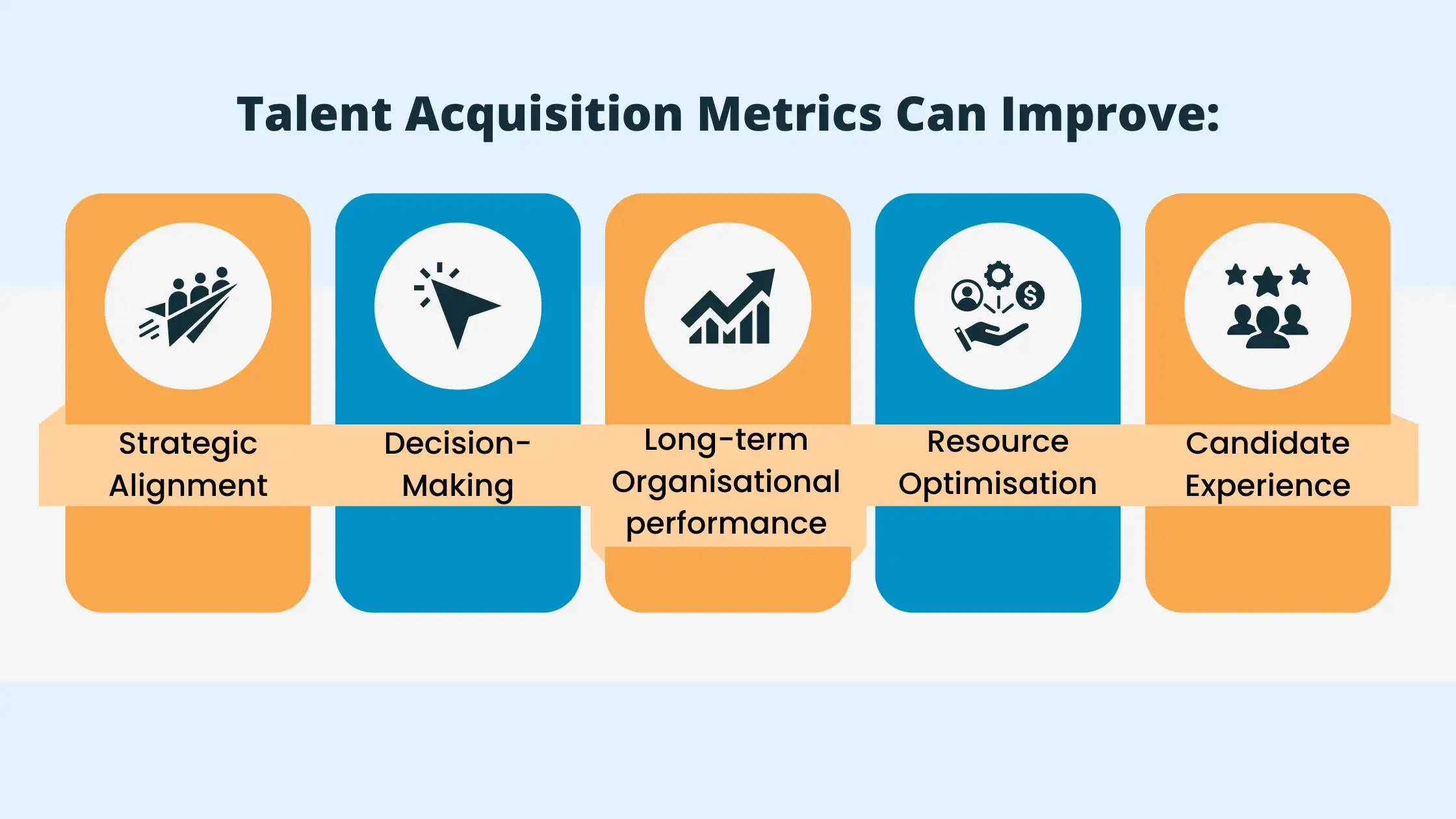TL;DR
- Recruitment metrics are essential for tracking and improving hiring efficiency and quality.
- Top recruitment metrics include Application Completion Rate, Time to Hire, Cost per Hire, and Quality of Hire.
- These metrics help improve candidate experience, reduce hiring costs, and enhance retention rates.
- Tracking sourcing channel efficiency and offer acceptance rates aids in optimising recruitment strategies.
As we step into 2026, recruitment metrics are crucial components of the dynamic recruitment world. It enables recruiters, HRs, and hiring managers to track and analyse the success and failure of the recruitment process.
Currently, analysing and tracking recruitment metrics is imperative for various reasons. It enables recruiters and HR professionals to make data-backed and informed decisions. By monitoring these key metrics, organisations can measure the efficiency of how they recruit and improve it to enhance the candidate experience. The metrics help in assessing and increasing the quality of the talent pool.
But wait, which metrics are more important? To find out that, we researched and narrowed down the top 11 metrics that are essential for navigating the end-to-end recruitment process with precision and effectiveness.
So, what are you waiting for? Let’s get started.
What are Recruitment Metrics?
Recruitment Metrics, also known as hiring metrics, are basically measurement data and key performance indicators that recruitment professionals use to assess the effectiveness and efficiency of their recruitment process.
These recruitment metrics help HR, recruiters, and hiring managers to spot the areas of improvement and optimise the end-to-end hiring process by making data-backed decisions.
Why are Recruiting Metrics Important?
Indeed, in the recruitment landscape, these metrics offer valuable data insights to evaluate and improve the way recruiters recruit talent. In fact, these hiring metrics also help to retain top performers for a longer period of time.
It presents the well-being and productiveness of the talent acquisition and recruitment marketing process.
In this competitive era with the digital revolution, we need a data-driven approach to recruitment in order to survive and thrive in the highly competitive talent market.
The recruitment metrics provide you with real insight into your existing recruiting process instead of just running it through instincts. These insights take you toward the right path of decision-making via real data and reports.
How Metrics Can Improve Recruitment

Top 11 Recruitment Metrics to Stay Ahead in 2026
Recruitment metrics differ from organisation to organisation as per their hiring goals and needs, but here are some of the key metrics one must track and analyse.
1. Application Completion Rate
The application completion rate metric is relatively straightforward. It is used to calculate the proportion of candidate applications that are fully completed out of the total number of candidates who started the application process. Here is the formula to calculate the Application Completion Ratio:
Application Completion Rate = No. of submitted applications / Total no. of applications started x 100
Example
For example, if 280 candidates started the application process and 210 of them actually completed it, then the Application Completion Rate would be calculated as (210/280) x 100 = 75%.
Why Measuring this recruiting metric is Important?
This recruitment metric offers important insights into the user experience of the application process. This way, it enables the recruiters to understand and identify improvement areas in their application process.
2. Time to Hire
This vital HR and recruitment metric measures the amount of time it takes to hire talent for a particular open position. The formula for calculating Time to Hire is:
Time to Hire = The day they accept the job - the day recruiter reaches the candidate
Example
Imagine that a recruiter started a candidate search for a specific role on the first day and then made contact with the prospective candidate on the fifteenth (15) day.
Afterward, if the ideal candidate accepted the job offer on the twenty-ninth (29) day, then the duration of the hiring process would be calculated as 29 - 15 = 14 days. So, the time-to-hire in this scenario would be 14 days.
Time-to-hire ratio = 15/29 x 100 = 51.72% (on the 15th-day candidate contacted divided by the day (29th) the talent agreed the offer multiplied by 100)
...
FAQs - Frequently Asked Questions
What are recruitment metrics and why are they important?
Recruitment metrics are key indicators used to measure the efficiency and success of hiring processes. They help recruiters and HR teams make informed decisions, improving candidate experience, cost management, and talent quality, especially when using tools like iSmartRecruit.
How can tracking the Application Completion Rate improve hiring?
Tracking the Application Completion Rate shows how many candidates finish the application process. It highlights areas for improvement in the application flow, which can enhance candidate engagement and increase successful hires with the help of platforms like iSmartRecruit.
What does 'Time to Hire' indicate in recruitment?
'Time to Hire' measures the days taken from contacting a candidate to their job acceptance. Monitoring this metric helps optimise recruitment speed and efficiency, reducing vacancy duration and improving overall hiring outcomes.
















